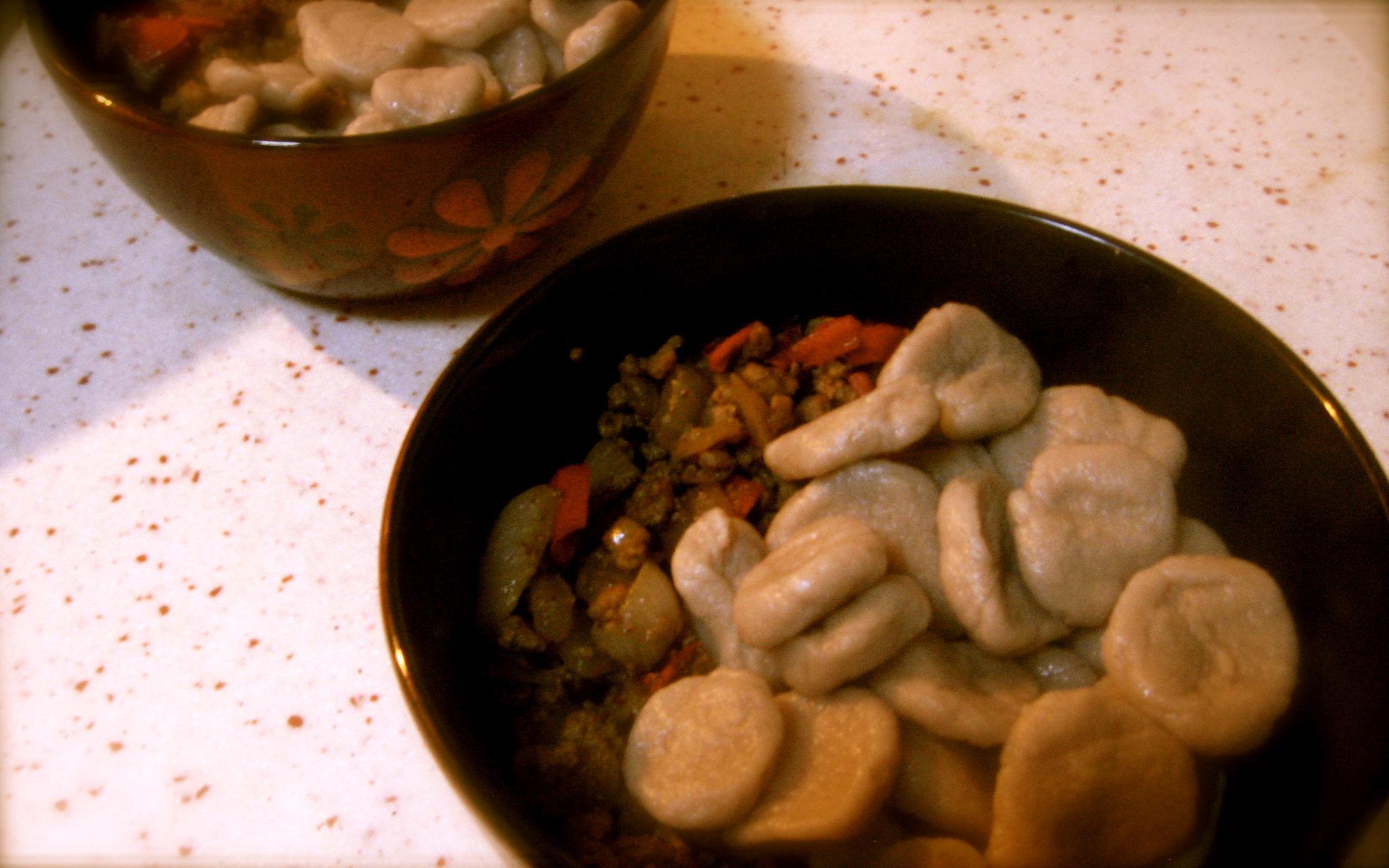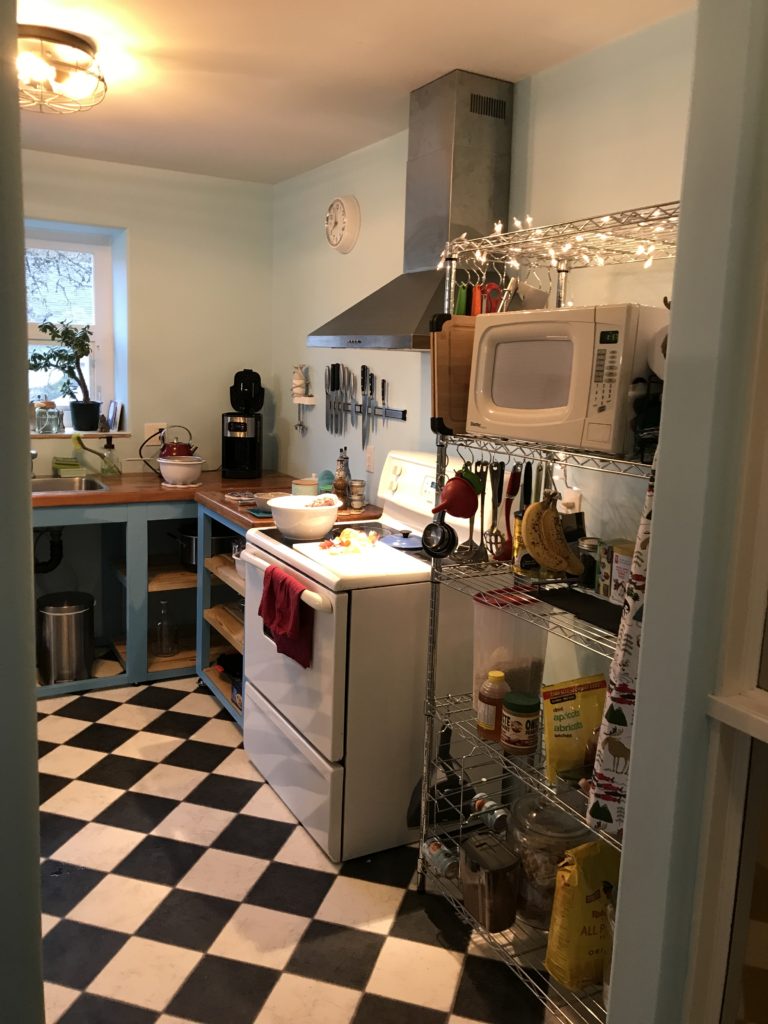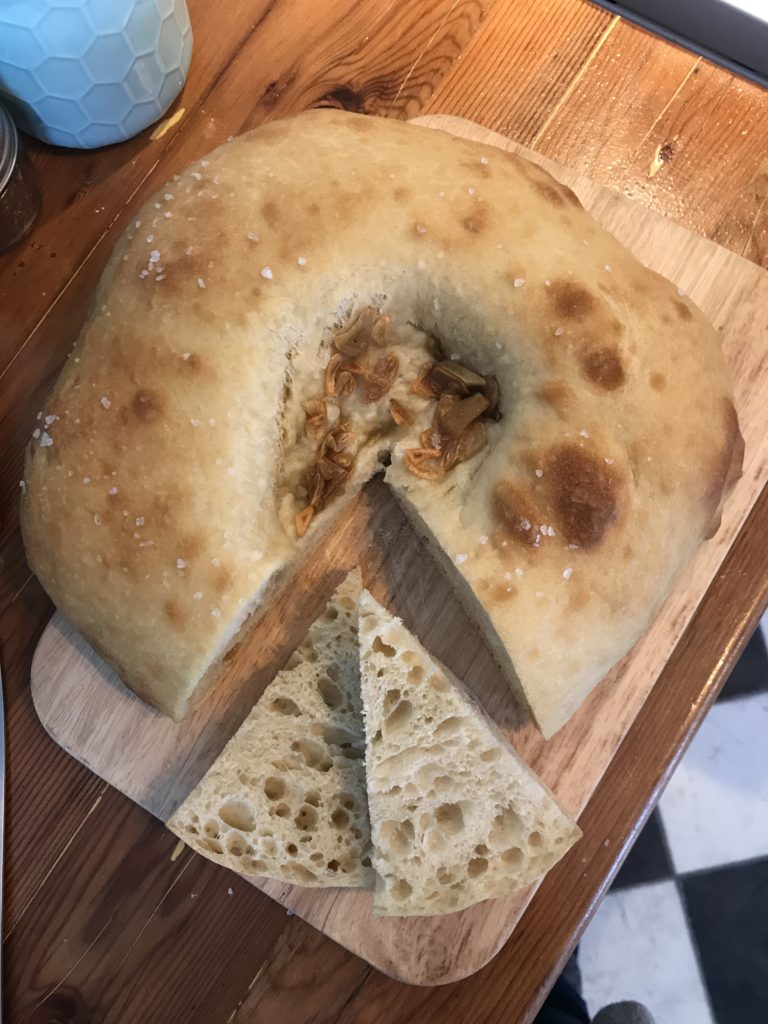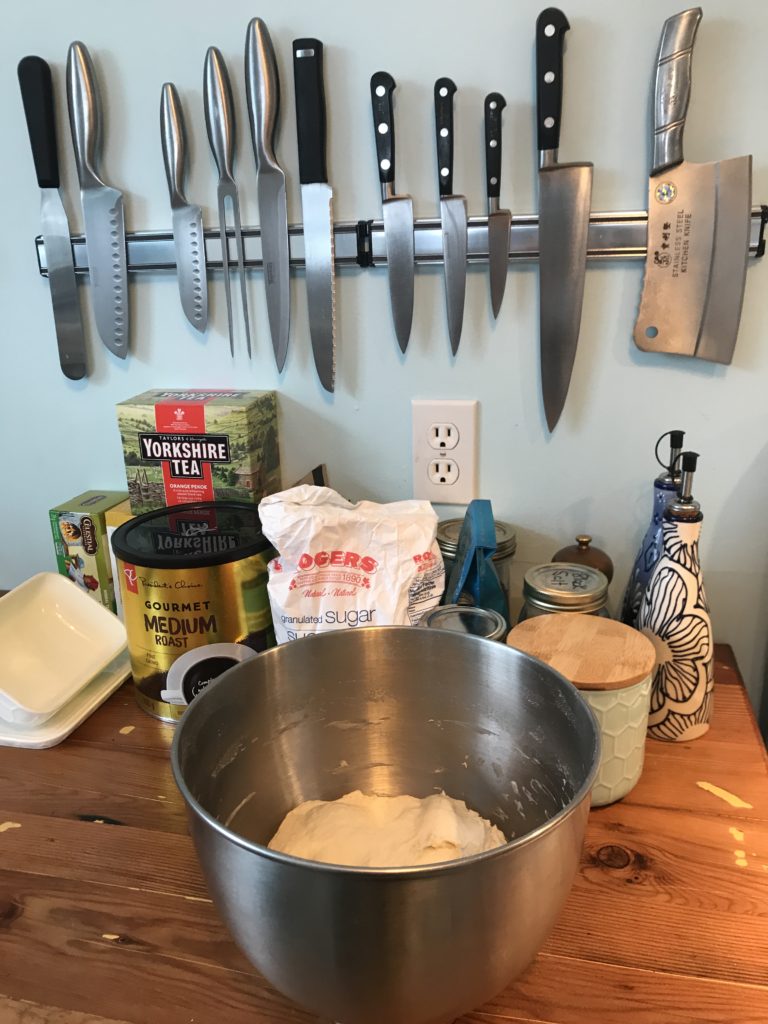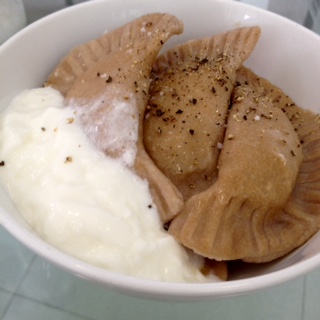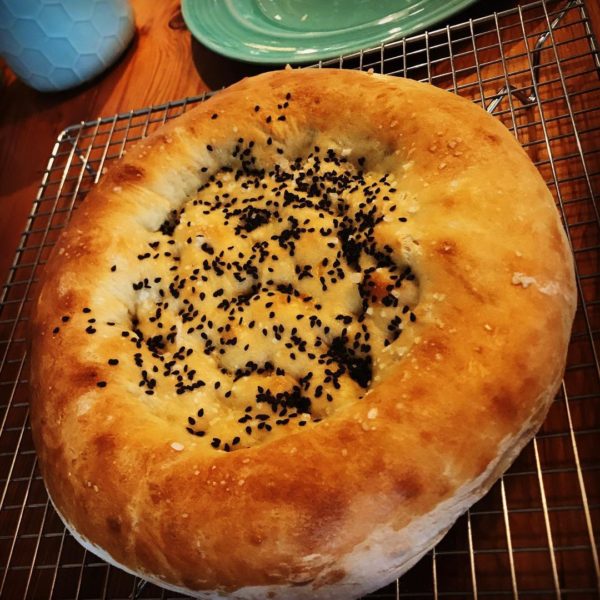
Loaf in the Time of Cholera: Uzbek Non
Today, we are going to delve into the wild and woolly world of Central Asian baking- namely, the lovely Uzbek non.
The other day, I got an email from my web host telling me that I was about to auto-pay for another two years. I pay a shocking amount of money to keep my various dormant blogs alive, so I probably should at least attempt to do something with them- something I have failed to do for the past 7 or so years.
I have decided to justify this ridiculous and pointless expenditure by starting a project wherein I attempt to document what I have been doing during the past year of Plague Time. Namely, baking obscure yeast breads based on recipes found in the deepest, darkest corners of the internet’s international food blogs and YouTube videos.
Jump to RecipeSome are in English, some are parsed using Google Translate. Some are videos with dubious subtitled translations.
I really like the murkiness of communication. The vague and unfamiliar tools, resources, methods, points of reference.
The ones that measure ingredients in water glasses and sugar spoons.
The ones that state ‘bake in a tandir until ready’ without any qualifying information.
The ones that say to add flour until the dough is not too sticky- but also not too hard. Similarly, knead the dough until it is the proper consistency.
One of the breads I have been experimenting with quite extensively has been the Uzbek non– ‘non’ being basically the Uzbek word for bread, along the lines of a South Asian naan. To say non bread, then, is to be redundant, along the lines of chay tea or pilav rice.
It also does not mean, as I have had to explain repeatedly, that it is a non-bread, a bread that is not bread. It is a non. It is a bread.
There are apparently many kinds of non, and the vagueness and variability of the recipes I delved into led me down all sorts of curious, experimental paths.
Some have water. Some have milk. Some have sugar. Some don’t.
Some have whole wheat flour, in part or entirely. Some have a mix of several flours, or just bread flour.
Some add chunks of unnamed animal fat in the mix.
Some are brushed in egg or milk or oil or butter.
Some are topped with sesame, some nigella seed, some mashed raw onions in egg yolk and yogurt.
Some are as broad as a large, fat pizza, and some are divided up into (almost every time) 4 smaller boules.
They all look like enormous plump bagels whose centres weren’t quite pushed through, where the dough in the middle is squashed down brutally with firm fingertips and pin-pricked by a chekich bread stamp into pretty patterns. My bread stamp is still in the mail (Uzbek Post is very slow in plague times) so I’ve been using fork tines with varying results.
My favourite version comes from a website that no longer exists. Aside from the unfortunate inability for me to give properly linked credit where credit is due (thank you, silkroadchef!), it’s no loss- the inscrutable recipe went something like this (paraphrased):
Uzbek Nan Bread (2015)
Ingredients: flour, warm water or milk (unspecified quantity of dry to liquid, noting ratio roughly 1.5 to 1 by weight or 3 to 1 by volume), yeast, sugar salt.
Directions: Add flour to bowl, make hollow. Fill hollow with yeast, liquid, sugar, salt. Stir and wait for froth. Knead 10 min. Rest 40 min. Knead briefly and shape into round (how high?? how wide??). Rest 15 min. Shape into Uzbek non shape. Bake on preheated stone at 200C.
https://silkroadchef.com/2015/12/14/uzbek-nan-bread/ (domain currently expired)
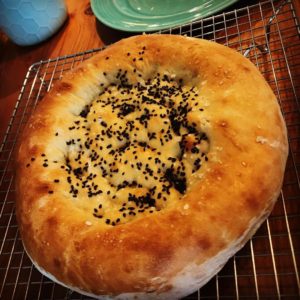
Uzbek Non
Ingredients
- 600 grams flour Bread flour works best for me, but a mix of all-purpose and atta also works.
- 400 grams warm water Warm milk is also an option, or a mix of both.
- 2 tsp yeast Dry or instant yeast both work- around 7 grams.
- 1 tsp salt Around 5 grams, for those weighing things.
- 1 tsp olive oil Oil is optional but nice.
- 1 tsp sugar Somehow the sugar has been optional, depending on the recipes I've used.
- Enough oil, melted butter, beaten egg or milk for brushing
- Nigella seeds or sesame seeds for topping
Instructions
- Add flour to bowl and dig a well in the centre.
- Pour liquid, yeast, salt, sugar (if using) and oil (if using) into the well and give it a tiny stir so a little flour gets mixed into it. Let it sit for around 5 minutes.
- Mix the liquids into the flour, then knead it for 10 minutes. Set a timer, put on some music, and knead until it feels smooth and stretchy.
- Let it rise until it is doubled. This may take any time between 40 minutes and 2 hours, depending on your room temperature. In winter, it takes my dough 2 hours, sitting on the hot water tank.
- Preheat oven to around 220°C — though I have had it at 200° and 240°, variously. If you have a cast iron flat-pan or a baking stone, put it in now.
- Place risen dough on a floured surface and shape it into a round- or, alternately, cut it into 4 smaller rounds. Press the round down gently with your hand so that it is about as thick as your wrist. Let the round(s) sit and rest for 15 minutes while the oven and baking stone heat.
- Press an indentation in the centre of the flattened ball, leaving a ridge the width of the length of your thumb(ish). Poke lots of tiny holes in the indented centre with a fork- or with a chekich, if Uzbek Postal services are working properly. Brush with beaten egg or milk or oil or nothing. Sprinkle with sesame or nigella or nothing.
- Bake for 15-20 minutes. Let cool before tearing into them.
Reference list (abridged)
- Natassja Can Cook (video)
- Eat the World (video)
- Mazar Cuisine (video)
You May Also Like
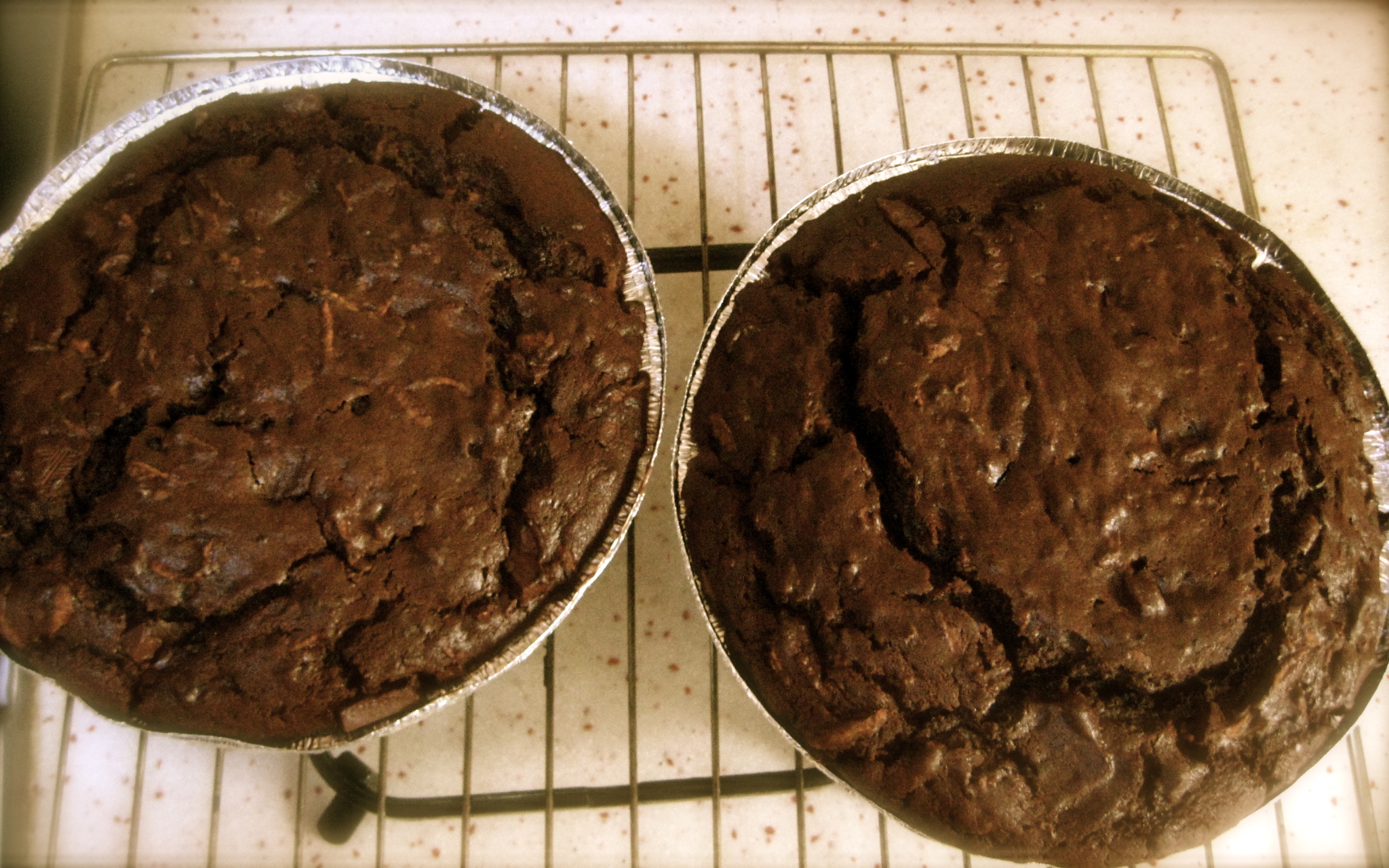
HangZhou Rearranged Chocolate Apple Cake
October 24, 2011
The Hundred Beans Campaign: Red Chili For China
November 10, 2011